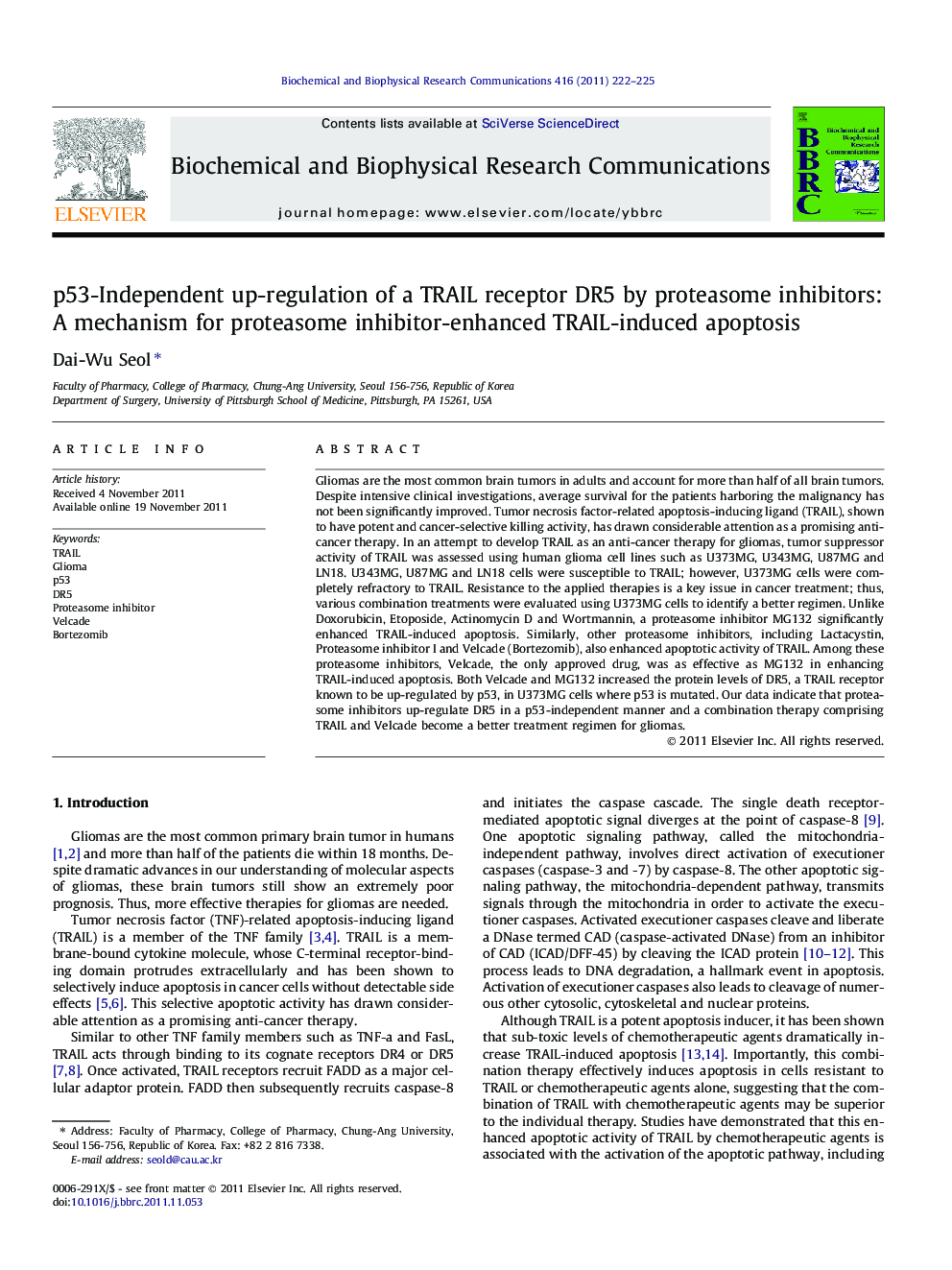| Article ID | Journal | Published Year | Pages | File Type |
|---|---|---|---|---|
| 1930019 | Biochemical and Biophysical Research Communications | 2011 | 4 Pages |
Gliomas are the most common brain tumors in adults and account for more than half of all brain tumors. Despite intensive clinical investigations, average survival for the patients harboring the malignancy has not been significantly improved. Tumor necrosis factor-related apoptosis-inducing ligand (TRAIL), shown to have potent and cancer-selective killing activity, has drawn considerable attention as a promising anti-cancer therapy. In an attempt to develop TRAIL as an anti-cancer therapy for gliomas, tumor suppressor activity of TRAIL was assessed using human glioma cell lines such as U373MG, U343MG, U87MG and LN18. U343MG, U87MG and LN18 cells were susceptible to TRAIL; however, U373MG cells were completely refractory to TRAIL. Resistance to the applied therapies is a key issue in cancer treatment; thus, various combination treatments were evaluated using U373MG cells to identify a better regimen. Unlike Doxorubicin, Etoposide, Actinomycin D and Wortmannin, a proteasome inhibitor MG132 significantly enhanced TRAIL-induced apoptosis. Similarly, other proteasome inhibitors, including Lactacystin, Proteasome inhibitor I and Velcade (Bortezomib), also enhanced apoptotic activity of TRAIL. Among these proteasome inhibitors, Velcade, the only approved drug, was as effective as MG132 in enhancing TRAIL-induced apoptosis. Both Velcade and MG132 increased the protein levels of DR5, a TRAIL receptor known to be up-regulated by p53, in U373MG cells where p53 is mutated. Our data indicate that proteasome inhibitors up-regulate DR5 in a p53-independent manner and a combination therapy comprising TRAIL and Velcade become a better treatment regimen for gliomas.
► Proteasome inhibitors promotes expression of a TRAIL receptor DR5, regardless of p53 status. ► TRAIL becomes a potent killer for gliomas, when combined with proteasome inhibitors. ► TRAIL combined with Velcade, the only approved drug as a proteasome inhibitor, can become a better regimen for gliomas.
